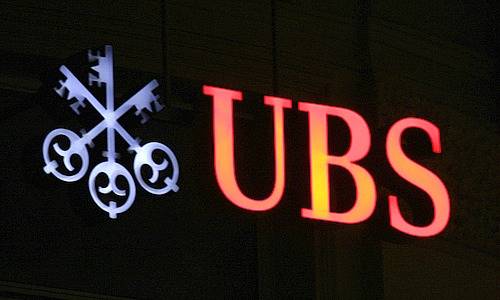UBS: Record Profit and Tasks Ahead
Swiss bank UBS had a record profit in 2015. Despite the formidable result, the bank has plenty to do still – finews.asia has compiled a list with the most important tasks ahead.
1. Advisory Business Model Hasn't Paid Off Yet
In wealth management, UBS failed to deliver to expectations in the fourth quarter. The bank said this was due to «very low levels of client activity and pronounced risk aversion». The conclusion: the UBS business model of generating a steady profit through advisory fees doesn't yet work. UBS remains dependent on the product sale to its customers. Only 26.4 percent of customers' assets are invested through mandates, an increase of 2 percent from a year earlier. UBS considers this as «solid». The bank seems some way off its goal.
2. Applying Gloss Doesn't Help Much
The fourth-quarter result would have looked much worse if UBS hadn't put on some gloss. UBS in the U.S. and Switzerland had accumulated deferred tax assets during the financial crisis. It activated a net tax benefit of 715 million francs in the fourth quarter, following the 1.295 billion in the previous three-month period.
The gloss didn't help much though: the stock took a battering today and declined as much as 7 percent at one point.
3. Setback in Business With Super Rich
The business with rich clients suffered a setback at the end of last year. The net new money flow in the final quarter was negative for the first time in at least two years. A total of 3.4 billion francs were withdrawn, a worrying sign for the bank. The emerging markets unit at UBS had a tough fourth quarter: assets declined 3.5 billion francs in the three months through December.
The inflow of new assets from the very rich slowed to 2.2 billion francs in the fourth quarter, from 4 billion in the third and 7.1 billion a year earlier.
4. Breaking With Past Habits
The results of Swiss financial institutes still contain evidence of the end of the business with untaxed assets from customers domiciled in other countries. UBS for instance reported an outflow of 3.5 billion francs in customer assets in the European cross-border business. Julius Baer on Monday was forced to admit that it also lost assets belonging to French and Italian clients last year.
5. U.S. Business in Turmoil
The Wealth Management Americas unit struggled to attain a level of profitability acceptable to the management. Pretax profit dwindled to $13 million from $268 million in the third quarter. Reason for this was a provision of $180 million taken to protect the bank against legal claims – presumably in connection with the investigations into the Puerto-Rico-investments.
At the same time, costs rose. The cost-income-ratio dropped to 97 percent from 85 percent in October.
6. Andrea Orcel’s Investment Bank Lags
Global volume for mergers and acquisitions hit a record last year according to Dealogic analytics, but revenue was down 8 percent from a year earlier at UBS’s corporate unit, which manages mergers and acquisitions advice and debt- and capital-raising activities.
While the overall investment bank did improve its cost-income ratio, or proportion of spending to revenue, to 78 percent in 2015 from a whopping 101 percent a year earlier, UBS’ revenue from advising on transactions was virtually unchanged on the year.
7. Asset Management: Not Profitable Enough
Asset management contributed just 10 percent to the group profit. The 20 percent increase in pretax profit didn't help much, because building the business takes time: with the new distribution network and the product range revamped UBS looks well equipped. Still, the bank lost 14 billion in assets under management, mainly because customers had a higher need for liquidity in the fourth quarter.
8. Oil Price Shock
UBS has loans totaling 6.1 billion francs outstanding from companies in the energy industry. The bank is closely monitoring loans considered at risk, but can't exclude defaults should the oil price remain at current levels. J.P. Morgan, Citigroup and Wells Fargo have already put money back to cover for potential losses. Standard & Poor's considers at risk half of all loans in the energy business.
9. Capitalization Remains a Strength
The capitalization of UBS is a strength. The banking giant today is one of the best-capitalized big banks. CET 1 was 14.5 percent at the end of the year, 1.1 percent up from the year earlier. The leverage ration increased to 5.3 percent from 5.1 percent. The government in October said it wanted big banks to have a ratio of 5 percent.






















